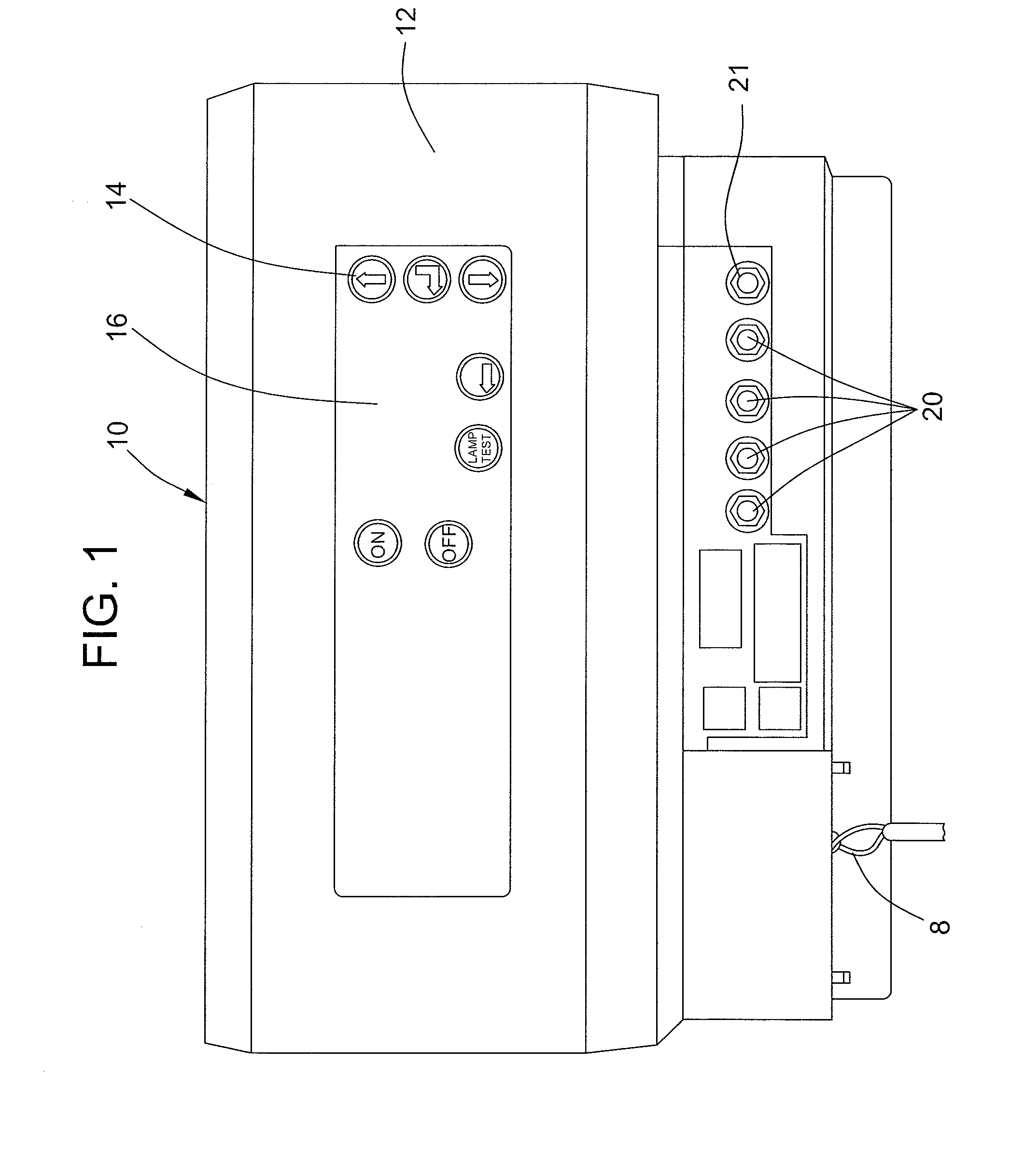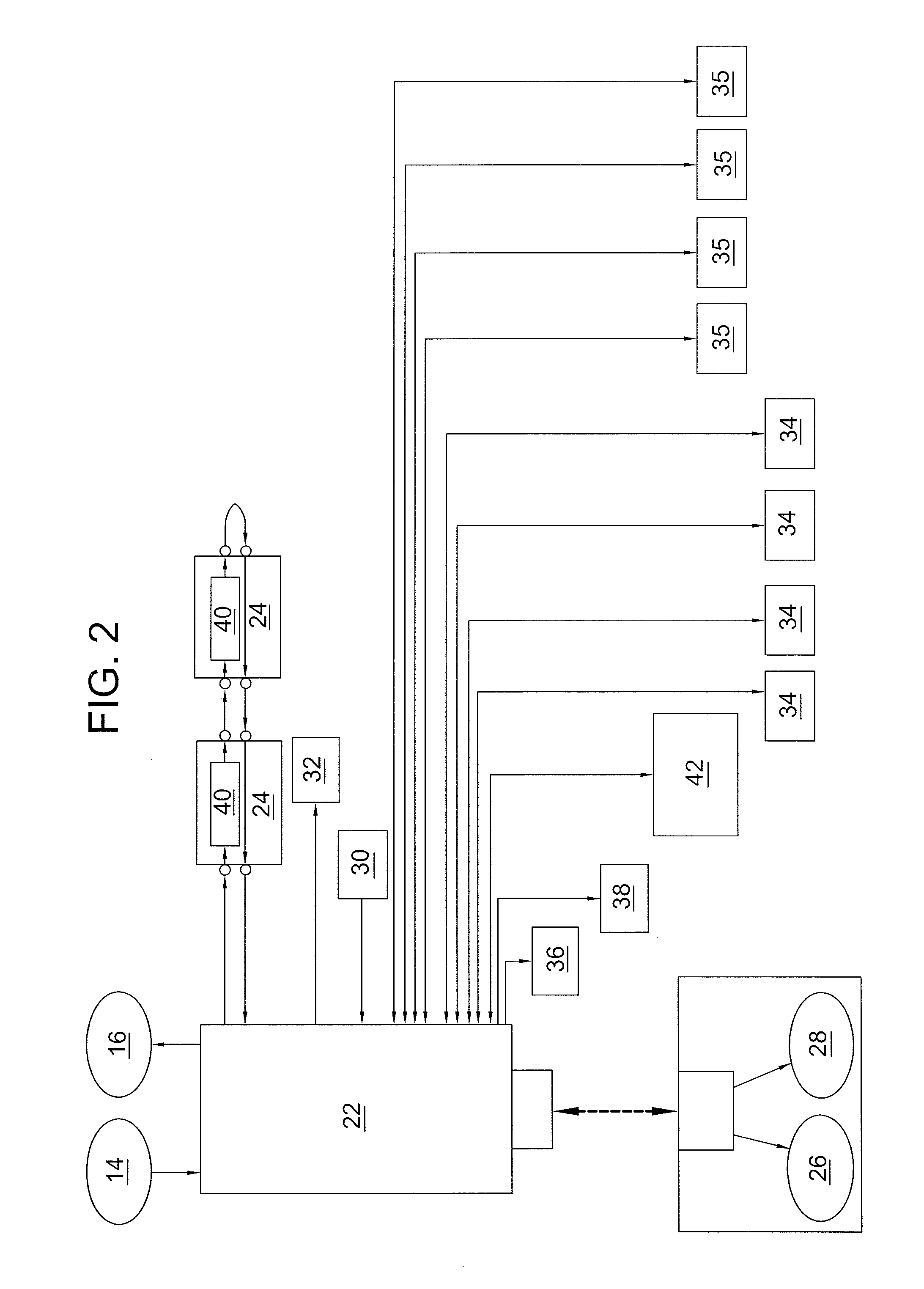Battery charger
a battery charger and charger technology, applied in the field of batteries, can solve the problems of difficult to provide a suitable battery charger for marine applications, commercially available battery chargers do not possess the flexibility necessary to readily adapt to these types of situations
- Summary
- Abstract
- Description
- Claims
- Application Information
AI Technical Summary
Benefits of technology
Problems solved by technology
Method used
Image
Examples
Embodiment Construction
[0009]Referring to FIG. 1 of the drawings there is shown an illustrative embodiment of a battery charger 10 according to the present invention. The battery charger 10 can be used to maintain batteries in a fully charged condition and to restore a discharged battery to a fully charged condition. The illustrated battery charger is configured for use in marine applications and, in particular, to charge one or more batteries or battery banks (i.e., a set of one or more batteries) on a boat. Hereinafter, the battery charger 10 will be described as be connectable to battery banks, however, those skilled in the art will appreciate that a bank could include just a single battery. Moreover, while the invention will be described in some aspects in connection with use on a boat, those skilled in the art will understand that the teachings of the present invention are equally applicable to other applications including any application involving the charging of multiple batteries.
[0010]In the illu...
PUM
 Login to View More
Login to View More Abstract
Description
Claims
Application Information
 Login to View More
Login to View More - R&D
- Intellectual Property
- Life Sciences
- Materials
- Tech Scout
- Unparalleled Data Quality
- Higher Quality Content
- 60% Fewer Hallucinations
Browse by: Latest US Patents, China's latest patents, Technical Efficacy Thesaurus, Application Domain, Technology Topic, Popular Technical Reports.
© 2025 PatSnap. All rights reserved.Legal|Privacy policy|Modern Slavery Act Transparency Statement|Sitemap|About US| Contact US: help@patsnap.com



